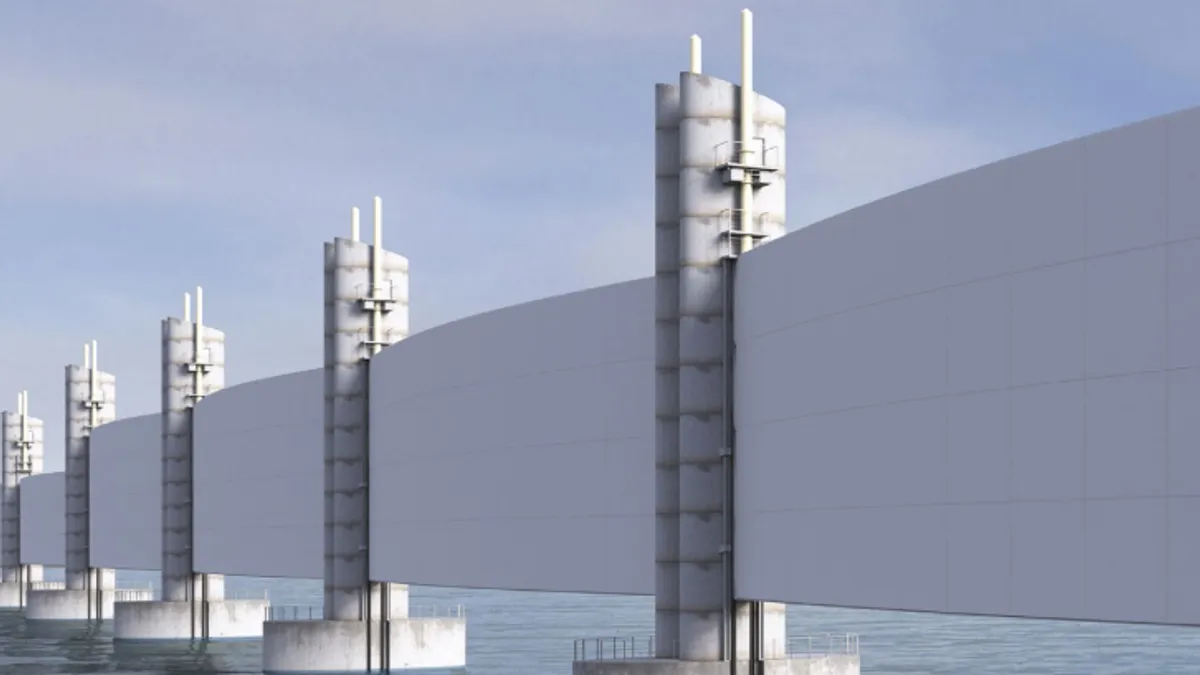Dive Brief:
- The Senate on Thursday approved construction of a hulking system of sea walls and other projects designed to protect 70 miles of Texas coast from hurricanes and flooding. The U.S. Army Corps of Engineers is planning the project in Galveston Bay.
- The movable seawall portion of the effort is nicknamed “Ike Dike” after the destructive hurricane that hit Galveston in 2008. It’s part of the larger Texas Coastal Project, which includes other coastal infrastructure like levees and dune restoration. If built, it’s on track to be the largest civil engineering project in U.S. history.
- The project is included in the Water Resources Development Act, which authorizes various federal water, coast and resilience projects. Funding for the $31 billion project is not yet secured, however.
Dive Insight:
The 22-foot storm surge that battered the Houston-Galveston area in 2008 underlined the imperative to protect the area — which contains the nation's busiest port and the continent's largest petrochemical complex — from hurricane surges. Planning for the Texas Coastal Project began shortly after.
As climate change worsens, sea levels are projected to continue to rise and extreme weather will grow in intensity and frequency. However, critics have questioned the cost and environmental impact of this particular solution, which would permanently alter hundreds of miles of coastline. The Ike Dike element alone would cost at least $16 billion and require 18 years to build, per Army Corps estimates.
Funding for the Texas Coastal Project will require a separate request to Congress from the Army Corps. If Congress does appropriate money, state and local governments must provide a local match, likely 35% of the cost. Thanks to inflation and rising building costs, estimates of the ultimate price tag vary widely.
The legislation passed the Senate 93-1 after clearing the House in June. It now goes back to the House for reconciliation before it can be sent to President Joe Biden’s desk for approval.














